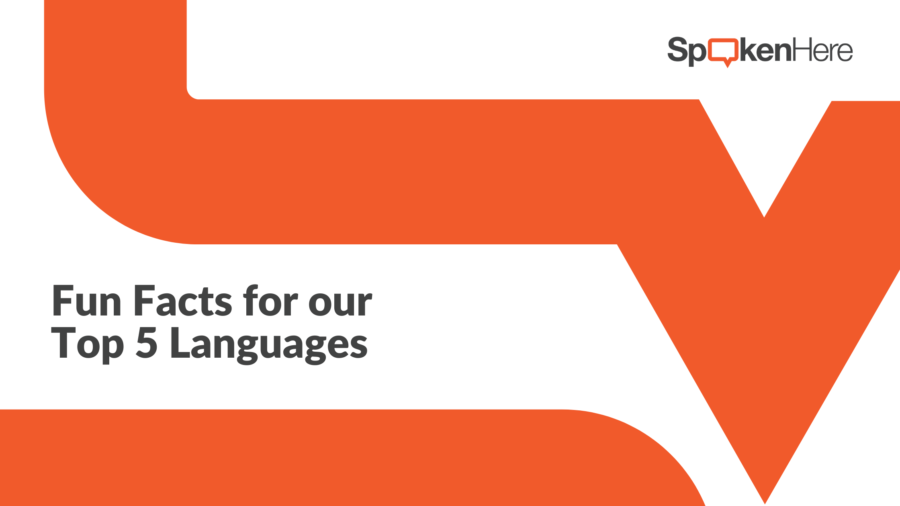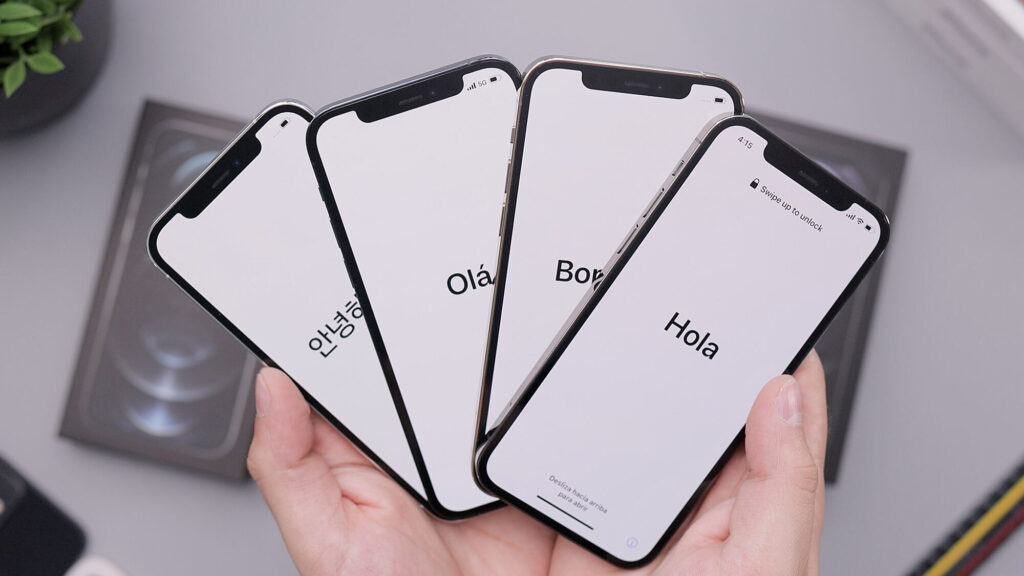
At SpokenHere, our dedicated team of translators and interpreters serve clients in over 300 languages, bridging the language gap for our clients all around the world.
Join us as we explore some fun facts about languages and delve into the fascinating world of localization needs for our clients’ five most requested languages – Spanish, Haitian Creole, Pashto, Dari, and Arabic.
We’re not just about building better relationships worldwide with our professional written translation and remote verbal interpreting services. We’re also all about embracing the beauty and diversity of languages and cultures. Much like a diverse tapestry, every language contributes to the rich cultural fabric of our global society. While the mysteries of their origins and intricacies remain evident, there’s no denying the fascinating beauty and expressive potential that every language holds when we take a step back and examine them.
So let’s dive in…
Spanish – A Global Language Fiesta
In the realm of languages, Spanish stands as a vibrant force, embracing a global stage with over 460 million native speakers. Spanish is the second most spoken language in the world. Additionally, 22 countries over four continents have Spanish as one of their official languages. Beyond its sheer numbers, the language reveals itself through a tapestry of accents and regional nuances. Depending on the source you consult, there are 7 to 11 main Spanish dialects spoken globally.
While Spanish primarily has its roots in Latin, approximately 8% of the language claims origins from the Arabic language. A popular interjection ¡Ojalá! stems from the Arabic phrase best translated as “Allah wills it.”
According to an article by FluentU, native Spanish speakers use idioms that might both confuse and intrigue English speakers. Here are just a few Spanish phrases where a literal word-for-word translation can’t work (cough, Google Translate fails). Our experienced interpreters and translators understand and are able to convey the nuanced meanings of cultural idioms when partnering with our Spanish-speaking clients:
No tener pelos en la lengua
While this phrase means “to tell it like it is,” the Spanish literal translation of “no tener pelos en la lengua” is “not to have hairs on your tongue.”
Estar más sano que una pera
“Estar más sano que una pera” is literally translated as “to be healthier than a pear.” The English equivalent is to be as fit as a fiddle.
Tiene más lana que un borrego
“Tiene más lana que un borrego” translates as “he has more wool than a lamb,” and it means that a person is loaded with cash.
Haitian Creole – A Caribbean Melody
In the enchanting realm of Haitian Creole, linguistic fusion takes center stage. Born out of a blend of French, African languages, and indigenous Taino elements, this language boasts a unique cultural identity. SpokenHere interpreters play a vital role in ensuring that the rich heritage of Haitian Creole is accurately conveyed.
Currently, Haitian Creole holds the status of an official language in Haiti, alongside French. Approximately 95% of Haitians declare it as their primary language. In the United States, according to the US Department of Education’s Office of English Language Acquisition, Haitian Creole is the sixth most commonly spoken language among English learners (ELs) in K-12.
During the 17th and 18th centuries, Haitian Creole originated as a contact language and as a means of African resistance against slavery in the colony of Saint-Domingue (now Haiti). The language allowed enslaved groups to communicate and work together toward their freedom from French colonists.
Want more fun facts about languages? In the Haitian Creole alphabet, you will not find the letters q or x. Plural forms are created by adding the word “yo” after a noun. It is important to note that Haitian Creole does not have subject-verb agreement, grammatical gender, or true verb tenses. While the language is considered a French-Creole, most native French speakers are not able to understand nor communicate without language support, as the differences between the languages are now so wide.
Afghani (Pashto and Dari) – Unveiling Afghanistan’s Linguistic Mosaic
Afghanistan, a country of breathtaking landscapes, is also home to a linguistic mosaic. Pashto and Dari are the two official languages, each with its own distinct charm. Dari is the Afghan term that most now use for the languages known as Persian and Farsi, though some people prefer to delineate.
The ratio of Dari and Pashto speakers in Afghanistan is relatively close. Recent estimates indicate that approximately 50% of the Afghan population speaks some form of Dari, while over 40% speak Pashto.
Dari, which serves as the first language for ethnic groups like Tajiks, Hazaras, and Aimaqs, is commonly regarded as the lingua franca in Afghanistan. It has historically been used for business and government transactions. In contrast, Pashto is the primary language of the Pashtuns, the largest ethnic minority in Afghanistan. However, as bilingualism and multilingualism are quite prevalent throughout the country, many Afghanis have a good command of both.
Pashto and Dari both use the Arabic alphabet with some modifications, although neither language is similar to Arabic. Interestingly, Pashto was mainly a spoken language for quite some time, but now it has a 44-letter alphabet (28 of those characters are Arabic).
When translating material from English into Pashto and Dari, our translators are careful to make design changes to accommodate the different script and choose compatible fonts for clients. Otherwise, display errors could turn a translation into gibberish.
Arabic – Script of Elegance
Arabic, with its graceful calligraphy and rich history, holds a special place in the hearts of millions and provides a treasure trove of fun facts about languages. Matter of fact, written Arabic has remained intact in its classical form for nearly 1,500 years – something very few languages can claim. Beyond its role in religious texts, Arabic is a language of poetic beauty and cultural depth.
More so than most languages, Arabic is a language with many synonyms. For example, there are more than 300 Arabic words for the English word “lion.” Our SpokenHere team takes great care to convey the intended nuance of Arabic written and spoken communications, localizing our translation and interpretation services to preserve the communication integrity of our clients.
If you are a math nerd, then you probably already know that the term algebra has its root both in the Arabic language itself and in the contributions of Arabic mathematicians. One of the key figures in the development of algebra is the medieval Persian mathematician Al-Khwarizmi, who wrote a famous mathematical treatise in the year 830 that is considered one of the earliest systematic works on algebra and has served as a foundational text for the subject. The term algebra is also directly derived from the Arabic word al-jabr.
Diverse Demographics, Diverse Needs

As the United States becomes increasingly diverse, so do the language needs of its residents. With millions of Spanish speakers, a growing Haitian Creole community, and individuals of Afghan and Arab descent, SpokenHere recognizes the importance of providing localization services that go beyond mere translation and interpretation.
Our dedicated language specialists facilitate seamless communication in critical areas such as healthcare and legal settings in more than 350 supported languages. From doctor-patient consultations to court proceedings, SpokenHere ensures that linguistic barriers do not impede access to essential services. Moreover, our services extend to everyday interactions, enabling individuals to navigate various situations with ease, and supporting companies that span all industries to communicate globally with their clients.
We celebrate the richness of languages and the connections they forge at SpokenHere. Join us on this linguistic journey, where every word is a step towards a more connected world. Contact us today for a consultation.